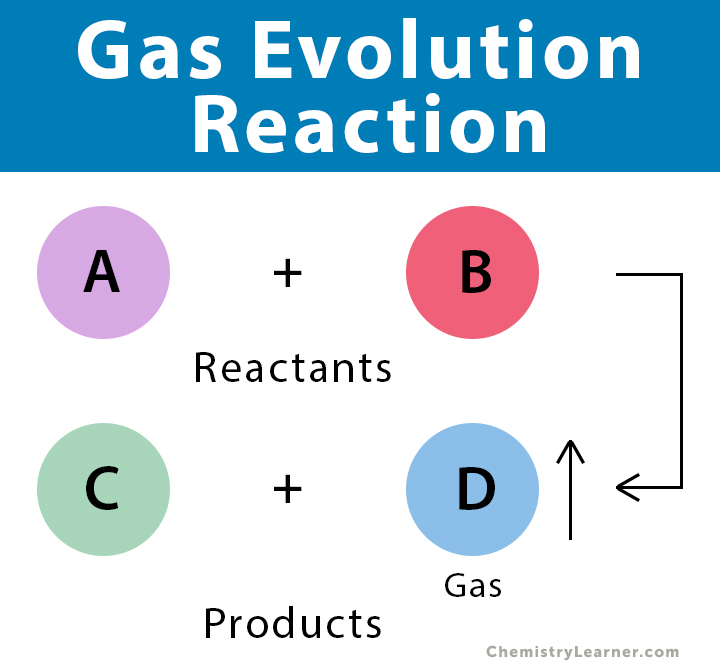Gas Evolution Reaction
What is a Gas Evolution Reaction
A gas evolution reaction is a chemical reaction in which one of the products is a gas, such as hydrogen, oxygen, and carbon dioxide. For example, the oxidation of metal in an acidic solution will yield a metal salt and hydrogen. The reaction is generally carried out in an enclosed chamber if the gases are toxic [1-3].
Examples of Gas Evolution Reaction
Here are some examples of chemical reactions showing the evolution of gas [1-4].

1. When sodium sulfate (Na2SO3) reacts with hydrochloric acid (HCl), the reaction produces sodium chloride (NaCl), water (H2O), and sulfur dioxide (SO2).
Na2SO3 (aq.) + 2 HCl (aq.) → 2 NaCl (aq.) + H2O (l) + SO2 (g)
2. Hydrochloric acid (HCl) reacts with calcium carbonate (CaCO3) to form calcium chloride (CaCl2), carbon dioxide (CO2), and water (H2O).
CaCO3 (aq.) + 2 HCl (aq.) → CaCl2 (aq.) + H2O (l) + CO2 (s)
3. Zinc (Zn) displaces and releases hydrogen (H2) from sulfuric acid (H2SO4). This is an example of a single-replacement reaction.
Zn (s) + H2SO4 (aq.) → ZnSO4 (aq.) + H2 (g)
4. Gaseous hydrogen chloride (HCl) and fluorine (F2) gas react to release chlorine (Cl2) gas
F2 (g) + 2 HCl (g) → 2 HF (g) + Cl2 (g)
5. Hydrochloric acid (HCl) readily decomposes sodium sulfide (Na2S) with the evolution of hydrogen sulfide (H2S) gas.
Na2S (aq.) + 2 HCl (aq.) → 2 NaCl (aq.) + H2S (g)
6. Upon heating, ferrous sulfate (FeSO4) decomposes to produce ferric oxide (Fe2O3), sulfur dioxide (SO2) and sulfur trioxide (SO3)
2 FeSO4 (s) → Fe2O3 (s) + SO2 (g) + SO3 (g)
